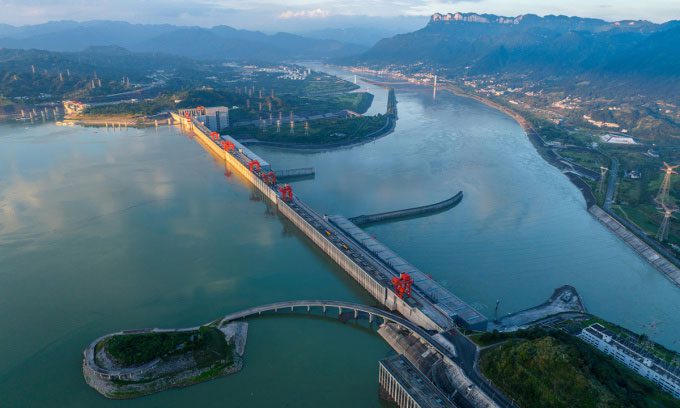The Three Gorges Dam on the Yangtze River has generated over 1,600 billion kWh of electricity in the past 20 years, significantly reducing coal consumption and consequently lowering CO2 emissions.

The Three Gorges Dam on the Yangtze River on July 9. (Photo: Xinhua).
Since the first generator unit of the Three Gorges Dam was put into operation in 2003, the facility has produced more than 1,600 billion kWh of electricity, equivalent to the total electricity consumption of the Chinese population for the entire year of 2022. This figure also corresponds to the electricity generated from over 480 million tons of standard coal, helping to reduce approximately 1.32 billion tons of CO2 emissions, reported CGTN on July 10.
With 34 turbo generator units, the Three Gorges Hydropower Plant has a total installed capacity of 22.5 million kW and an annual designed electricity generation capacity of 88.2 billion kWh. The project serves as the “backbone” of the electricity transmission projects from west to east and from north to south in China. The plant also supplies electricity to regions outside the project, such as central China and Guangdong Province.
The construction of the Three Gorges Hydropower Plant began in 1994. After passing all tests, the plant was officially recognized as completed and commenced operations in 2020. In addition to electricity generation, the facility plays a crucial role in flood control, transportation, and water resource management.
The Three Gorges Dam is 2,355 meters long and has a height of 185 meters above sea level. The construction utilized 27.2 million cubic meters of concrete, primarily for the dam structure, 463,000 tons of steel—enough to build 63 Eiffel Towers—and excavated 102.6 million cubic meters of earth. The dam stands 181 meters above the bedrock. The construction cost of the dam reached over 30 billion USD since the inception of the project in 1994.


















































